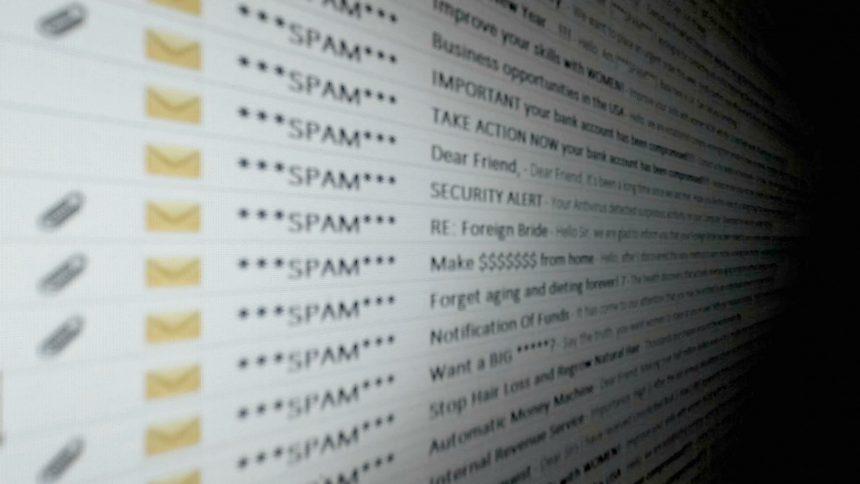Phishing scams have become increasingly sophisticated, using various tactics to trick individuals into disclosing personal information or infecting their systems with malware. One particularly insidious form of phishing involves emails claiming to be from pornographic websites, threatening the recipient with exposure of sensitive information. These scams are designed to create panic and manipulate individuals into taking actions that compromise their privacy and security.
General Purpose and Threat of Phishing Scams
Phishing scams generally aim to deceive recipients into revealing confidential information or downloading malicious software. These attacks typically infiltrate systems through deceptive emails, fake websites, or malicious attachments. The primary threat posed by these scams includes unauthorized access to personal information, financial loss, and potential damage to the infected system. Individuals who fall victim may experience identity theft, financial fraud, or a compromised system that could further spread malware.
The Porn Website Email Phishing Scam
The phishing scam discussed in the reference article involves emails purporting to be from a pornographic website. The scam’s aim is to intimidate recipients into believing that their private information has been compromised and that they need to act immediately to avoid exposure.
Details of the Scam
- Email Address: The email is typically sent from a seemingly legitimate but fake email address, often resembling an official or credible source.
- Content: The email usually contains alarming content, claiming that the recipient’s browsing history has been recorded and threatening to send compromising material to their contacts unless a ransom is paid or specific actions are taken.
Instructions and Details Provided:
- Threatening Message: The email may state that the recipient’s activity on a pornographic website has been recorded.
- Demand for Payment: The message often includes a demand for payment, typically in cryptocurrency, to avoid having the information released.
- Urgent Action Required: The email may include a sense of urgency, pressuring the recipient to act quickly without thoroughly evaluating the message.
Purpose of the Scam
The primary purpose of this phishing scam is financial gain. By exploiting the recipient’s fear of embarrassment or exposure, the scammers aim to coerce payment under duress. These scams rely on psychological manipulation to achieve their objectives.
Common Encounters and Similar Threats
Individuals often encounter such scams when they have engaged with adult content online or when their email addresses are publicly available. It’s essential to recognize that similar phishing threats may involve:
- Ransomware Emails: Threatening to expose personal data unless a ransom is paid.
- Tech Support Scams: Claiming that your system is infected and demanding payment for fake tech support services.
- Account Security Scams: Pretending to be from legitimate companies, claiming your account is at risk and asking for login credentials.
Removal Guide for Malware Installed by the Scam
If you suspect that your system has been infected by malware from this phishing scam, follow these steps to remove it:
- Disconnect from the Internet: This prevents further data transmission and reduces the risk of additional infections.
- Boot into Safe Mode:
- For Windows: Restart your computer and press
F8orShift + F8before Windows starts. Choose “Safe Mode with Networking.” - For Mac: Restart your computer and hold down the
Shiftkey until the Apple logo appears. This will start your Mac in Safe Mode.
- For Windows: Restart your computer and press
- Uninstall Suspicious Programs:
- For Windows: Go to Control Panel > Programs > Programs and Features. Look for any unfamiliar or suspicious programs and uninstall them.
- For Mac: Go to Applications and drag any suspicious apps to the Trash.
- Delete Malicious Files:
- For Windows: Use File Explorer to locate and delete files related to the scam. Check the Temp folder (
%TEMP%) and other directories. - For Mac: Use Finder to search for and delete suspicious files. Check Library folders for related files.
- For Windows: Use File Explorer to locate and delete files related to the scam. Check the Temp folder (
- Run a Full System Scan:
- Download SpyHunter: This tool will help detect and remove malware that may be hidden in your system.
- Install and Run SpyHunter: Follow the prompts to install SpyHunter, and then perform a full system scan.
- Update Your System and Software: Ensure that your operating system and software are up-to-date with the latest security patches.
- Change Your Passwords: Update passwords for all your online accounts, especially those related to email, banking, and social media.
- Monitor Your Accounts: Keep an eye on your financial statements and credit reports for any unauthorized transactions or activity.
Preventing Future Scams
To avoid falling victim to similar scams in the future, follow these best practices:
- Be Skeptical: Always verify the authenticity of unexpected emails or messages, especially those that create a sense of urgency.
- Use Strong, Unique Passwords: Employ a password manager to generate and store complex passwords.
- Enable Two-Factor Authentication: Add an extra layer of security to your accounts.
- Install Reliable Security Software: Tools like SpyHunter can offer ongoing protection and early detection of threats.
By taking these precautions and using reliable security tools, you can significantly reduce the risk of falling victim to phishing scams and other cyber threats.
Download SpyHunter Today
For a comprehensive malware scan and protection, download SpyHunter and perform a free scan to ensure your system is secure.
By staying informed and vigilant, you can protect yourself from falling victim to these malicious schemes and ensure your online safety.





